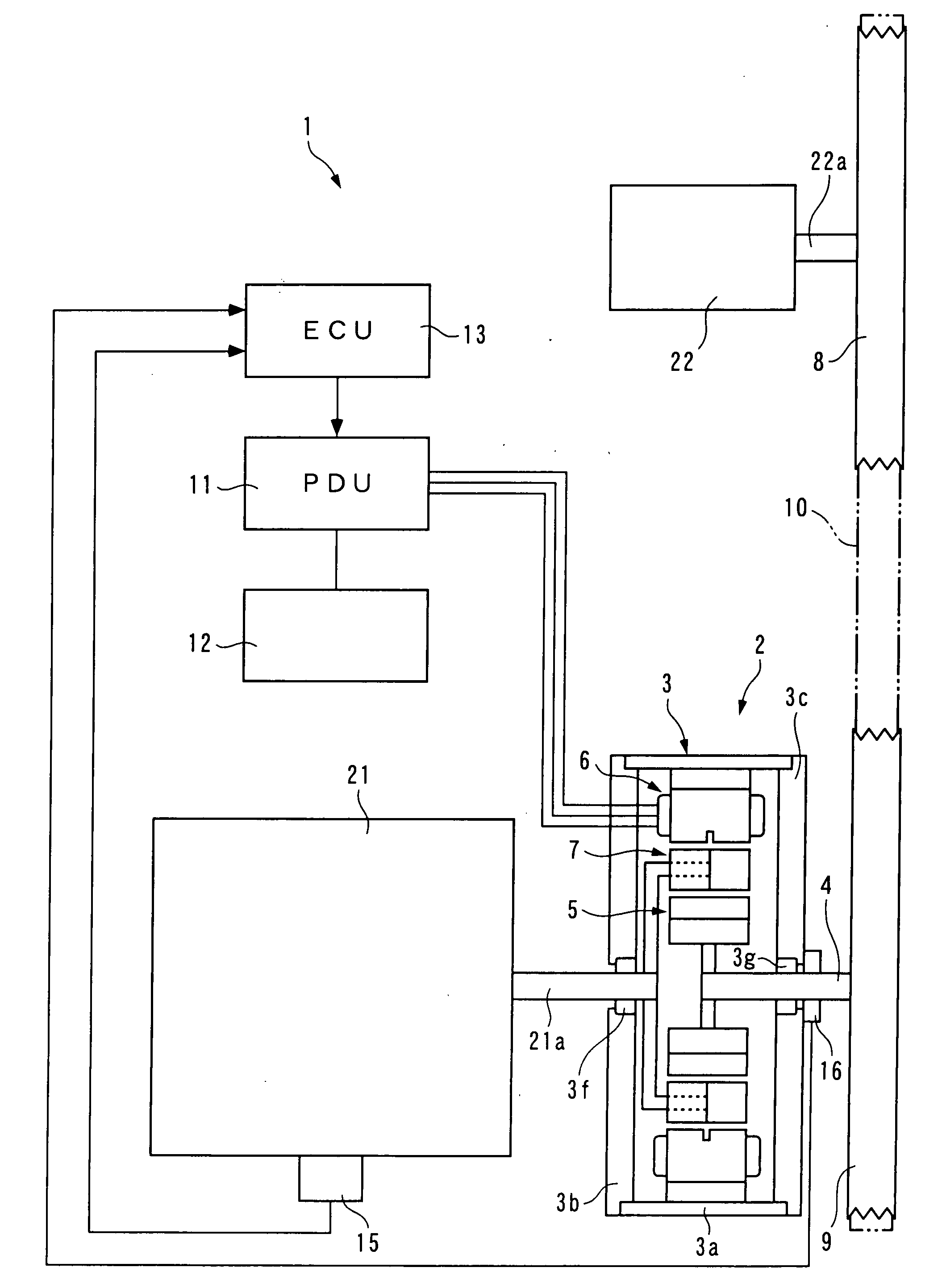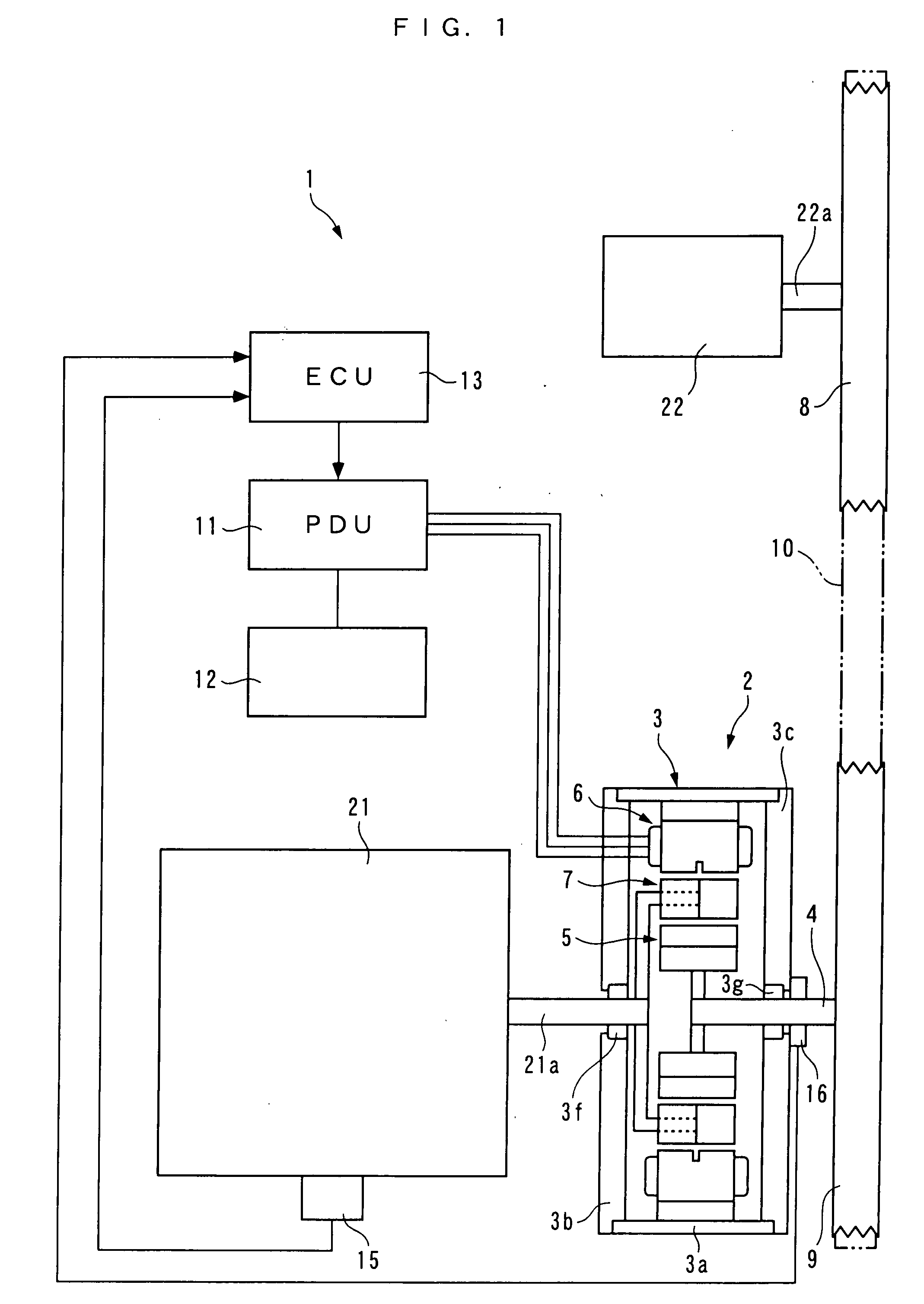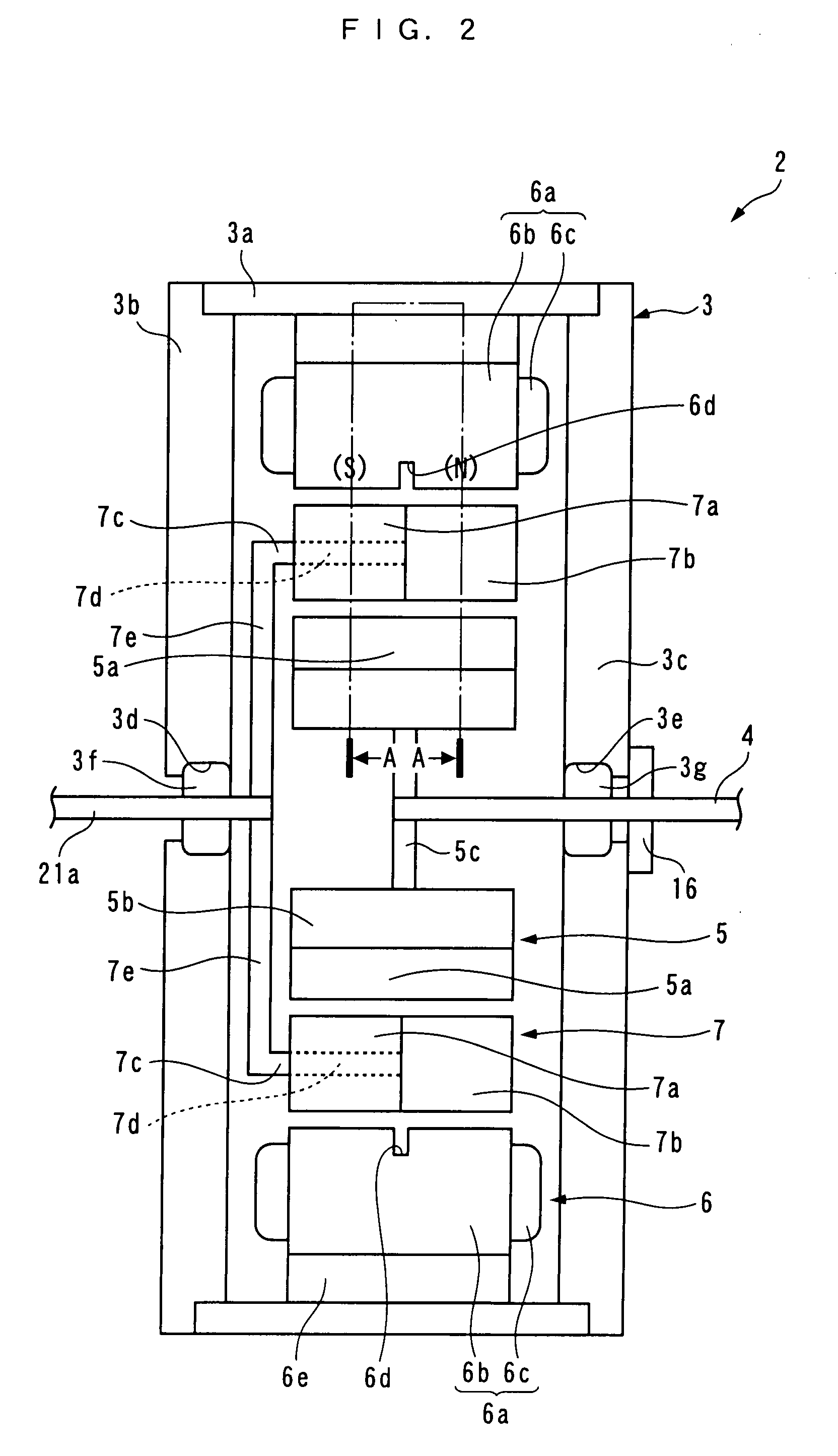Accessory drive system with rd motor
a technology of accessory drive and rd motor, which is applied in the direction of magnets, machines/engines, magnets, etc., can solve the problems of increasing the size of the system, degrading marketability, and increasing manufacturing costs, so as to reduce manufacturing costs and downsize the accessory drive system
- Summary
- Abstract
- Description
- Claims
- Application Information
AI Technical Summary
Benefits of technology
Problems solved by technology
Method used
Image
Examples
Embodiment Construction
[0033]The present invention will now be described in detail with reference to the drawings showing a preferred embodiment thereof. It should be noted that in the figures, hatching in portions illustrating cross-sections are omitted for convenience. FIG. 1 schematically shows an accessory drive system 1 according to the present embodiment together with an internal combustion engine 21 and an accessory 22. The internal combustion engine (hereinafter simply referred to as “the engine”) 21 is e.g. a gasoline engine installed on a vehicle (not shown), and is equipped with a crank angle sensor 15. The crank angle sensor 15 detects the crank angle position of a crankshaft 21a (output shaft) of the engine 21, and delivers a signal indicative of the sensed crank angle position to an ECU 13, described hereinafter. The accessory 22 is e.g. a compressor of an automotive air conditioner, and has an input shaft 22a thereof integrally formed with an input pulley 8.
[0034]Referring to FIG. 1, the ac...
PUM
 Login to View More
Login to View More Abstract
Description
Claims
Application Information
 Login to View More
Login to View More - R&D
- Intellectual Property
- Life Sciences
- Materials
- Tech Scout
- Unparalleled Data Quality
- Higher Quality Content
- 60% Fewer Hallucinations
Browse by: Latest US Patents, China's latest patents, Technical Efficacy Thesaurus, Application Domain, Technology Topic, Popular Technical Reports.
© 2025 PatSnap. All rights reserved.Legal|Privacy policy|Modern Slavery Act Transparency Statement|Sitemap|About US| Contact US: help@patsnap.com



